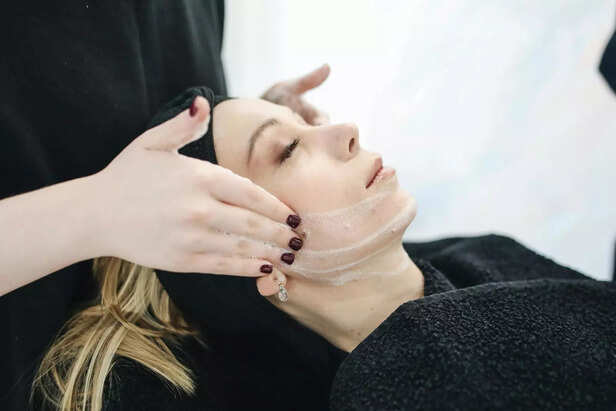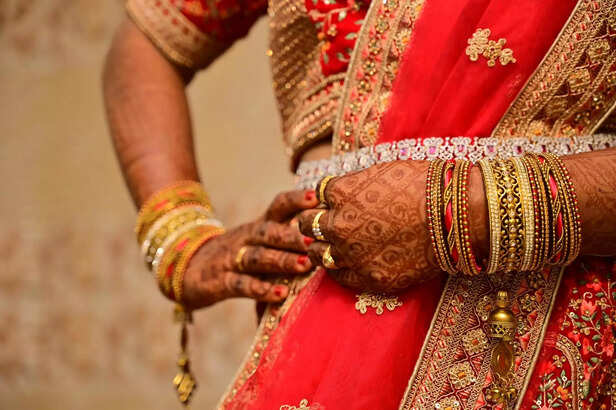Somewhere between the trial makeup sessions, the fasting-for-his-long-life rituals, and the chorus of “You’ll look so pretty in that lehenga,” an Indian bride quietly disappears. No one notices it at first. After all, she’s still there—smiling for photos, nodding politely at compliments, sitting patiently while someone adjusts her dupatta for the twelfth time. But the girl she was—the one who laughed without covering her mouth, who spoke her mind without measuring it—is slipping further away. And in her place, a version of “beautiful” that everyone else approves of is stitched together, layer by layer, like her bridal outfit. This isn’t a rant about beauty standards. It’s about what happens to a woman’s soul when everyone is only paying attention to her face.
1. "Be Just" – And Disappear Into What Others Expect You to Be

Before a bride is allowed to feel love, she’s expected to earn worth. And often, it begins with her skin. "Fairness" isn't just about complexion here. It’s code for purity. For acceptability. For being 'good enough’ to be shown off. So she bleaches, peels, masks, scrubs. Not because she dislikes her reflection—but because she’s told the world might.
That the light has to hit her skin a certain way to make her worthy of attention. And slowly, she begins to internalize that her natural self needs fixing. And you know what’s cruel about that? When someone finally says, “You look beautiful,” it doesn’t feel like a compliment. It feels like a relief. Like she passed. Like she gets to be chosen—for today.
2. “Be Slim but Curvy” – The Body That Isn’t Hers Anymore

There’s a deep, quiet pain in being asked to transform your body for a day that's supposed to be yours. The bridal body isn’t one size fits all—it’s one size fits everyone else’s expectations. She must be slim. But not too slim. Curvy. But in the right places. Her arms should be toned, her waist cinched, her back flawless. But it isn’t just her body on display—it’s her discipline, her femininity, her “desirability.”
And in chasing that impossible equation, she loses something even bigger: the ability to feel at home in her own skin. Because how can she dance like herself, eat like herself, laugh like herself—when she’s being trained to pose like someone else?
3. “Be Tall, but Not Taller Than Him” – Because Ego Still Comes in Inches

Nobody explicitly states it, yet it lingers implicitly. It manifests in how shoe heights spark debates or when photographs get edited. The bride needs to align physically with the story of male supremacy. She ought to have a height that appears graceful, without overshadowing the man next to her.
It may be nuanced, but every woman who has ever stood barefoot so that the man beside her could seem taller understands that this goes beyond mere height. It's about diminishing gently. Being reminded that love comes with conditions. One condition is: Do not occupy too much space.
4. "Appear as Innocent as an Infant" — Yet Embody the Poise of a Mature Bride

Indian brides aim for a flawless appearance:hair-free, smooth, and delicate. They should exude radiance without appearing sweaty. Their fragrance should be pleasant, their movements graceful, and they ought to maintain an elegant posture—though not so much that it hides their face from photographs. The silent distress of feeling objectified arises when one’s body becomes a canvas for endless modifications. Each part undergoes processes like waxing, threading, and rigorous cleansing until it feels detached from oneself.
When you receive compliments for looking like a child just as you enter the most mature phase of your life—it’s an irony nobody prepares you for. You’re expected to appear youthful, act obediently like a goddess, and take charge responsively all at the same time.
5. "Embrace Tradition But Also Sensuality" — The Dual Existence of Every Indian Bride

She must know how to fold her hands in respect and arch her back in desire. She should fast on Karva Chauth, but also be “charming” enough to keep her husband interested. She must blush, but never desire. Obey, but never bore.
It’s exhausting, this tightrope walk between being “pure” and being “pleasing.” And in all this, no one pauses to ask: what does she want? What kind of wife does she want to be? What kind of marriage does she imagine? Her wants are treated like extras in a movie that stars everyone else’s expectations.
So What Are We Really Celebrating?
When she walks down that aisle, or towards the mandap, adorned in jewels and hope, everyone turns to look. And they say she looks beautiful. But does she feel beautiful? Or does she feel... erased? Because if the only version of her worth celebrating is one that’s bleached, shrunk, waxed, reshaped, and re-scripted—then we are not celebrating her. We are celebrating our own conditioning, wrapped in silk.A wedding should be a homecoming to oneself, not an escape from it. Let’s stop demanding perfection and start honoring presence. Let’s let brides be who they are—radiant, flawed, hilarious, tired, bold, quiet, wild, unsure, in love. Let’s stop teaching women to spend the most important day of their lives trying to look like someone else. Because the bride isn’t here to be pretty. She’s here to be remembered—as herself.
